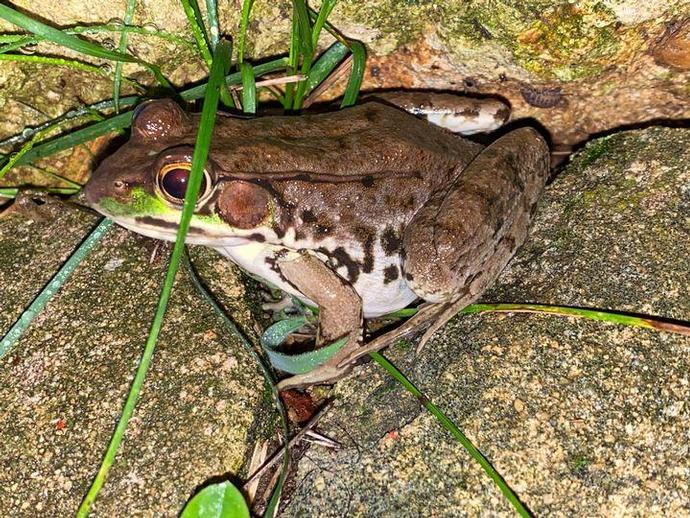June 15, 2021
It's time for the Tuesday edition of #BenInNature presented by our friends at Carter Bank & Trust!
Shortly after a huge storm blew through on Sunday night, I found this little guy hanging out near my back porch! This is Lithobates clamitans, the green frog!
This particular green frog is most likely a female based on the size of the tympanum, which is the circular patch behind a frog's eye. The tympanum is basically an eardrum and it functions just like our own eardrums, transmitting sound waves to the middle and inner ear. In female green frogs, the diameter of the tympanum is about the same size as the frog's eye, while males have tympanums that are much larger than their eyes.
The green frog is found throughout most of the eastern half of North America, and it's quite common wherever it's found. These frogs live in ponds, lakes, swamps, streams, and even roadside ditches. They're also quick to colonize new bodies of water; if you've ever had a frog turn up in your swimming pool, it was likely a green frog. These frogs are most often seen on the shore near bodies of water, and when something approaches, they leap into the water and swim away. Most of the time when I'm walking near ponds, I hear them splash into the water before I ever see them!
One interesting fact about green frogs is that they're occasionally blue! This is due to a genetic mutation known as axanthism, which is most obvious in green animals. Axanthism prevents the frog from producing yellow pigments; since green frogs produce yellow and blue pigments in order to make the color green, a green frog that can't produce yellow pigments appears blue!
ABOUT #BenInNature
Social distancing can be difficult, but it presents a great opportunity to become reacquainted with nature. In this series of posts, Administrator of Science Ben Williams ventures outdoors to record a snapshot of the unique sights that can be found in the natural world. New updates are posted Monday - Friday, with previous posts highlighted on the weekends. This series of posts is made possible thanks to the support of VMNH Corporate Partner Carter Bank & Trust (www.cbtcares.com).
NATURE PHOTO IDENTIFICATIONS
If you discover something in nature that you would like help identifying, be sure to message us right here on Facebook with a picture (please include location and date of picture) and we'll have our experts help you identify it!

 Hours & Admissions
Hours & Admissions Directions
Directions

